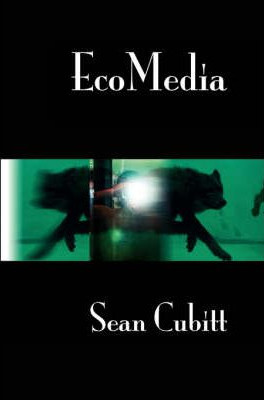Michal Šimonfy: Bio – Art (2011) [Slovak]
Filed under thesis | Tags: · bio art, bioethics, biotechnology, genetics, nature, simulation, wetware

Diplomová práca mapuje rôzne umelecké prístupy, ktoré si za oblasť svojho záujmu zvolili skúmanie živej prírody, predovšetkým s prihliadnutím na jej vnútornú, biologickú či genetickú podstatu. Samostatnú časť práce tvoria príklady umeleckých stratégií spájajúce umenie, vedu a biotechnológie, pričom problematike genetického výskumu a vyvstávajúceho nového vzťahu medzi človekom, prírodou a technológiami je venovaná druhá kapitola práce, dôrazom na ich možné spoločenské, etické či politické dôsledky.
Diplomová práca
Akadémia umení v Banskej Bystrici, Fakulta výtvarných umení, Katedra Intermédií a digitálnych médií
Vedúci práce: MgA. Michal Murin ArtD.
Školiteľ: PhDr. Katarína Rusnáková, Ph.D.
Banská Bystrica: FVU AKU 2011
68 strán
viac (vrátane informácií o praktickej časti práce)
Comment (0)Sean Cubitt: EcoMedia (2005)
Filed under book | Tags: · bioethics, biopolitics, cinema, ecology, film, popular culture, technology, television

“For the last twenty years ecology, the last great political movement of the 20th century, has fired the imaginations not only of political activists but of popular movements throughout the industrialised world. EcoMedia is an enquiry into the popular mediations of environmental concerns in popular film and television since the 1980s. Arranged in a series of case studies on bio-security, relationships with animals, bioethics and biological sciences, over-fishing, eco-terrorism, genetic modification and global warming, EcoMedia offers close readings of Peter Jackson’s The Lord of the Rings, Miyazake’s Princess Mononoke, The Perfect Storm, X-Men and X2, The Day After Tomorrow and the BBC’s drama Edge of Darkness and documentary The Blue Planet. Drawing on the thinking of Flusser, Luhmann, Latour, Agamben and Bookchin, EcoMedia discusses issues from whether animals can draw and why we like to draw animals, to how narrative films can imagine global processes, and whether wonder is still an ethical pleasure. Building on the thesis that popular film and television can tell us a great deal about the state of contemporary beliefs and anxieties, the book builds towards an argument that the polis, the human world, cannot survive without a three way partnership with physis and techne, the green world and the technological.”
Publisher Rodopi, Amsterdam, 2005
ISBN 9042018852, 9789042018853
x+168 pages
PDF (updated on 2021-3-3)
Comment (0)Donna J. Haraway: When Species Meet (2008)
Filed under book | Tags: · activism, animal, bioethics, care, cloning, companion species, dogs, genetics, language, love, philosophy, play, posthumanism

“In 2006, about 69 million U.S. households had pets, giving homes to around 73.9 million dogs, 90.5 million cats, and 16.6 million birds, and spending over $38 billion dollars on companion animals. As never before in history, our pets are truly members of the family. But the notion of “companion species”—knotted from human beings, animals and other organisms, landscapes, and technologies—includes much more than “companion animals.”
In When Species Meet, Donna J. Haraway digs into this larger phenomenon to contemplate the interactions of humans with many kinds of critters, especially with those called domestic. At the heart of the book are her experiences in agility training with her dogs Cayenne and Roland, but Haraway’s vision here also encompasses wolves, chickens, cats, baboons, sheep, microorganisms, and whales wearing video cameras. From designer pets to lab animals to trained therapy dogs, she deftly explores philosophical, cultural, and biological aspects of animal-human encounters.
In this deeply personal yet intellectually groundbreaking work, Haraway develops the idea of companion species, those who meet and break bread together but not without some indigestion. “A great deal is at stake in such meetings,” she writes, “and outcomes are not guaranteed. There is no assured happy or unhappy ending—socially, ecologically, or scientifically. There is only the chance for getting on together with some grace.”
Ultimately, she finds that respect, curiosity, and knowledge spring from animal-human associations and work powerfully against ideas about human exceptionalism.”
Publisher University of Minnesota Press, 2008
ISBN 0816650462, 9780816650460
360 pages
Reviews: Margrit Shildrick (Society and Animals, 2008), Ivan Csicsery-Ronay, Jr. (Humanimalia, 2010).
PDF (updated on 2012-7-31)
Comment (0)
